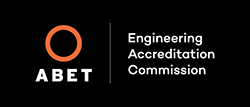Auburn University’s bachelor’s degree in aerospace engineering prepares students to be active and successful contributors to industry, academia and professional aerospace organizations. The program requirements for pre-engineering students to move into the aerospace engineering major are outlined below. Students must complete these requirements by the end of their second year or in four semesters.
| Freshman | |||
|---|---|---|---|
| Fall | Hours | Spring | Hours |
| CHEM 1030 Fundamentals Chemistry I | 3 | ENGL 1120 English Composition II | 3 |
| CHEM 1031 Fundamental Chemistry I Laboratory | 1 | PHYS 1600 Engineering Physics I | 4 |
| ENGL 1100 English Composition I | 3 | MATH 1620 Calculus II | 4 |
| MATH 1610 Calculus I | 4 | Core Social Science1 | 3 |
| Core History1 | 3 | ENGR 1110 Introduction to Engineering | 2 |
| ENGR 1100 Engineering Orientation | 0 | ||
| COMP 1230 Introduction to Computing with MATLAB | 2 | ||
| 16 | 16 | ||
| Sophomore | |||
| Fall | Hours | Spring | Hours |
| MATH 2630 Calculus III | 4 | MATH 2660 Topics in Linear Algebra | 3 |
| MATH 2650 Linear Differential Equations | 3 | ENGR 2070 Mechanics of Materials | 3 |
| PHYS 1610 Engineering Physics II | 4 | ENGR 2010 Thermodynamics | 3 |
| ENGR 2050 Statics | 3 | ENGR 2350 Dynamics | 3 |
| AERO 2200 Aerospace Fundamentals | 2 | Core Humanities1 | 3 |
| 16 | 15 | ||
| Junior | |||
| Fall | Hours | Spring | Hours |
| MATH 5630 Introduction to Numerical Analysis I | 3 | AERO 3120 Aerodynamics II | 3 |
| ELEC 3810 Fundamentals of Electrical Engineering | 3 | AERO 3230 Flight Dynamics | 4 |
| Core Literature 1 | 3 | AERO 3310 Orbital Mechanics | 3 |
| AERO 3110 Aerodynamics I | 3 | AERO 3610 Aerospace Structures I | 2 |
| AERO 3130 Aerodynamics Laboratory | 2 | Core Fine Arts | 3 |
| AERO 3220 Aerospace System Dynamics and Controls | 3 | ||
| 17 | 15 | ||
| Senior | |||
| Fall | Hours | Spring | Hours |
| AERO 4140 Aerodynamics III | 3 | AERO 4630 Aerospace Structural Dynamics | 4 |
| AERO 4510 Aerospace Propulsion | 4 | AERO 4720 Aerospace Design II: Aircraft Design, 4740 Aerospace Design II: Space Mission, or 4760 Aerospace Design II: Launch Vehicle | 3 |
| AERO 4620 Aerospace Structures II | 4 | Aero/Astro Elective2 | 6 |
| AERO 4710 Aerospace Design I: Aircraft Design, 4730 Aerospace Design I: Space Mission, or 4750 Aerospace Design I: Launch Vehicle | 3 | AERO 4AA0 Program Assessment | 0 |
| Core Social Science1 | 3 | ||
| UNIV 4AA0 Achieve the Creed | 0 | ||
| 14 | 16 | ||
| Total Hours: 125 | |||
- 1
The AU Bulletin lists the University Core Curriculum requirements for students in the College of Engineering. Students must complete a sequence in either Literature or History.
- 2
Advisor approval required
http://www.abet.org
Program Educational Outcomes for Aerospace Engineering:
- Many interested Auburn Aerospace graduates will successfully pursue advanced degrees in engineering, law, business, or medicine.
- Many Auburn Aerospace graduates will contribute in support and/or leadership positions in industry, academia, and/or government and professional aerospace organizations to maintain U.S. technical superiority in aerospace engineering.
- All Auburn Aerospace graduates will recognize the need to maintain and increase the depth and breadth of their competency in their area(s) of expertise (which may turn out to be areas other than aerospace engineering) by engaging in individual programs of life-long learning.
Student Outcomes for Aerospace Engineering:
- Identify, formulate, and solve complex engineering problems by applying principles of engineering, science, and mathematics;
- Apply engineering design to produce solutions that meet specified needs with consideration of public health, safety, and welfare, as well as global, cultural, social, environmental, and economic factors;
- Communicate effectively with a range of audiences;
- Recognize ethical and professional responsibilities in engineering situations and make informed judgments, which must consider the impact of engineering solutions in global, economic, environmental, and societal contexts;
- Function effectively on a team whose members together provide leadership, create a collaborative and inclusive environment, establish goals, plan tasks, and meet objectives;
- Develop and conduct appropriate experimentation, analyze and interpret data, and use engineering judgment to draw conclusions;
- Acquire and apply new knowledge as needed, using appropriate learning strategies.


